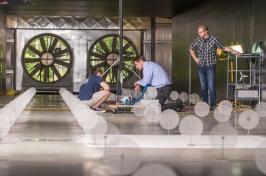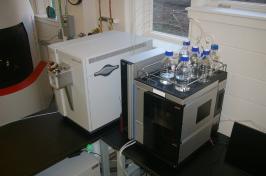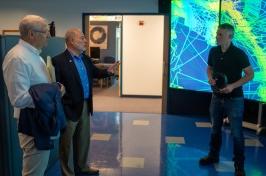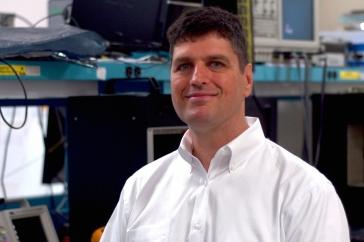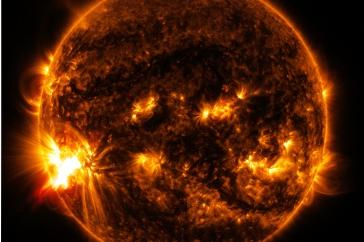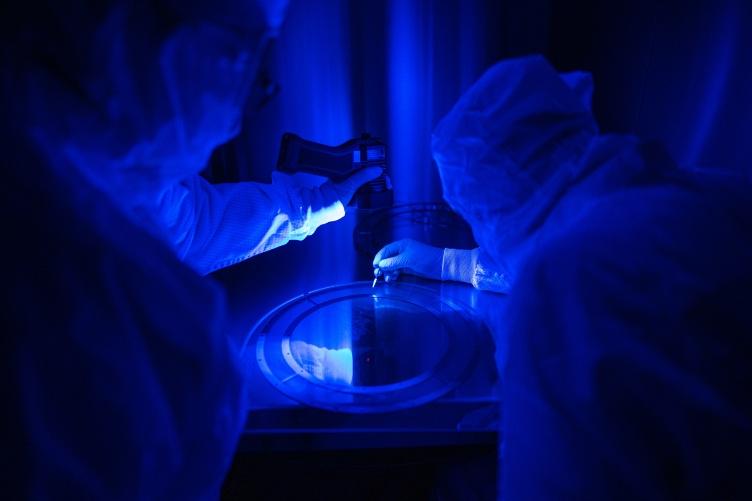
In a darkened clean room lit solely by an ultraviolet light, UNH flight laboratory manager Skylar Volger (left) and lab technician Amanda Wester '22 (right) examined a thin metal disk full of perfectly round, tiny perforations, and gently wiped away all the dust particles they encountered on its surface. The disk was then stacked on top of others identical to it to form what's called a collimator -- a piece of equipment destined for space that will ultimately help scientists map the boundaries of our heliosphere: the magnetic bubble that surrounds and protects our solar system.
"The collimator effectively works like the blinders on a horse -- it limits the field of view of the instrument so that everything (light and plasma, for example) enters from a restricted, well-defined direction," explains Jonathan Bower '15 '18G, a UNH calibration scientist for the project. "This limits the interference of solar wind plasma and stray light while allowing us to view the interstellar neutrals coming from outside our solar system."
The collimator is just one of the components being built at UNH for NASA's Interstellar Mapping and Acceleration Probe (IMAP) mission, which is scheduled to launch in early 2025. The heliosphere is a region where the constant flow of particles from our sun, called the solar wind, collides with material from the rest of the galaxy, limiting the amount of harmful cosmic radiation entering the heliosphere. IMAP will collect and analyze particles that make it through the heliosphere’s protection.
-
Written By:
Rebecca Irelan | Institute for the Study of Earth, Oceans, and Space | rebecca.irelan@ngskmc-eis.net | 603-862-0990




































